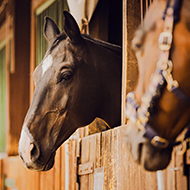Scientists call for urgent investment in bird flu response
The data reveals a 73 per cent collapse in the great skua's breeding population.
Scientists from the British Trust of Ornithology (BTO) have called for an urgent investment into improved responses to the spread of high pathogenicity avian influenza (HPAI).
The organisation has described the spread of the disease as an ‘unprecedented global wildlife emergency’, which could push vulnerable species beyond recovery and threaten livestock and human health.
As part of its investigation into bird flu responses, BTO has gathered a series of scientific studies across two issues of its scientific journal, Bird Study. The research explores the scale and spread of avian influenza in the UK, as well as its multiple pathways including Africa and South America.
BTO says the studies document the impact of avian influenza, as well as assessing the effectiveness of different management responses.
The data reveals the disease’s significant impact on numbers of great skuas. There was a 73 per cent collapse in great skua’s UK breeding population, contributing a loss of approximately 45 per cent of the global population.
HPAI also killed a third of Svalbard’s barnacle goose population, which spends winter in the UK’s Solway Estuary.
Breeding terns and gulls across Europe have also been severely impacted by avian influenza, including colonies in the UK. There were also declines in breeding success for Scotland’s white-tailed eagles and golden eagles, which is believed to be linked to their contact with infected prey.
Using the statistics uncovered by the studies, the editors of Bird Study examined the impact of different management strategies and suggested new approaches.
The editors have made a number of recommendations, which they believe will improve how we monitor for future mortality and respond to major outbreaks. The recommendations could lead to a better understanding of the scope, scale and implications of the disease for wild bird populations.
Based on their findings, they are calling for urgent investment into the long-term monitoring of the disease as well as improved approaches to disease response. They also recommend a ‘One Health’ framework to responses, incorporating public health and environmental policy into decisions.
James Pearce-Higgins, BTO director of science, said: “The last three years have shown the power of citizen science birdwatchers, surveyors and bird ringers, combined with BTO analysis, to track the spread of the disease and its impact on bird populations.
“It is essential that these long-term surveillance schemes are maintained and enhanced to track ongoing disease impacts and to inform the recovery of vulnerable populations.”
The 20 studies, as well as two editorial overviews, are available here.
Image © Shutterstock



 Zoetis has launched a new survey to identify management techniques for Equine Herpes Virus (EHV).
Zoetis has launched a new survey to identify management techniques for Equine Herpes Virus (EHV).